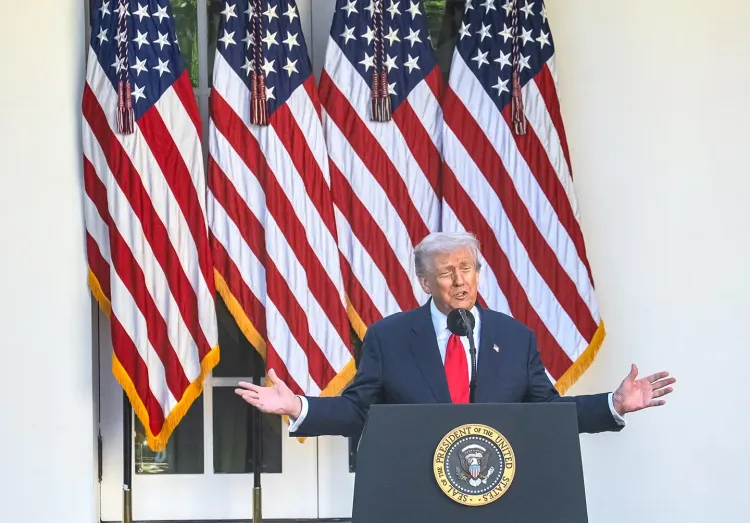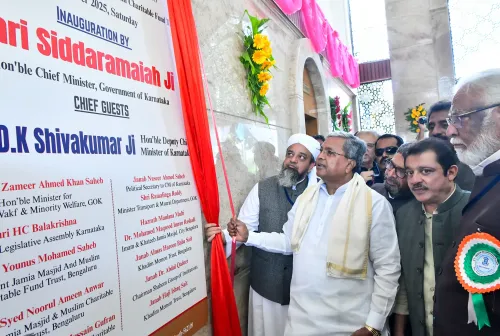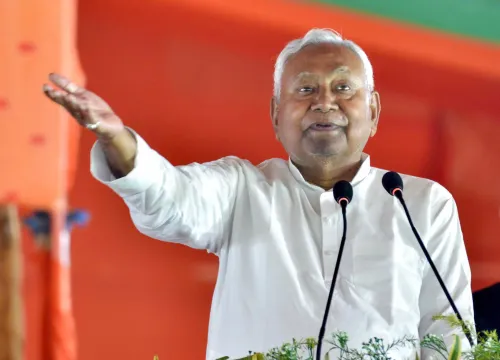What Will Be the Outcome of Trump's Asia Tour and His Talks with Xi?

Synopsis
Key Takeaways
- Trump's Asia tour encompasses Malaysia, Japan, and South Korea.
- A potential meeting with Kim Jong Un could emerge during the trip.
- The discussions with Xi Jinping are crucial amidst trade tensions.
- Economic agreements are expected to be a focal point.
- Trump aims to showcase US influence in Southeast Asia.
New Delhi, Oct 25 (NationPress) The global community is keeping a close eye on United States President Donald Trump's ongoing journey to three key Asian nations, which promises a mixture of expectations. This five-day excursion kicks off in Malaysia, where the President is anticipated to arrive on Sunday morning for the AESAN Summit, and will be followed by stops in Japan and South Korea.
One of the key highlights of his trip is likely to be a direct meeting with President Xi Jinping of China, especially given the current tensions surrounding trade tariffs. Additionally, during the final segment of his tour, although not confirmed in the official schedule, a possible meeting with North Korean leader Kim Jong Un could steal the spotlight, reminiscent of previous interactions.
The past engagements between Trump and Kim, which included three summit meetings from 2018 to 2019 and notable public gestures, have captured international attention. A significant moment was their spontaneous meeting on June 30, 2019, at the Demilitarised Zone (DMZ) in Panmunjom, where Trump became the first sitting US President to step onto North Korean soil after a brief moment of hesitation.
During this encounter, Trump engaged in lighthearted banter with Kim, while media outlets highlighted the significance of their handshake and crossing the border as signs of a budding personal rapport that could potentially unlock long-standing diplomatic stalemates.
According to South Korea’s unification minister, Chung Dong-young, there is a call for Trump and Kim to make a “bold decision” to meet again. Trump himself expressed his openness to such a meeting while speaking to reporters on Air Force One, reflecting on his “great relationship” with Kim.
Reports from last month indicated that Kim holds “positive memories” of Trump and sees no reason not to resume discussions, although he emphasized that the US must discard its “delusional obsession with denuclearisation”.
In South Korea, Trump’s anticipated meeting with Xi Jinping will occur during the APEC meetings. The current situation is influenced by tariff threats from Washington and Beijing’s countermeasures concerning critical exports such as rare-earth elements.
Both nations possess motives to de-escalate tensions—economic slowdown threats, domestic political agendas, and the global repercussions of supply-chain disruptions—but they also recognize the leverage in maintaining a firm stance, rendering outcomes precarious. Their discussion may yield temporary relief for markets and tactical concessions on pressing issues, but sustainable economic peace will necessitate enforceable agreements and active political support from both sides.
During the concluding phase of his tour at the end of this month, Trump may also unveil new trade agreements, advocate for recognition for fostering peace between Thailand and Cambodia, and demonstrate that Washington still holds influence in Southeast Asia, a region where Beijing is increasingly powerful. He aims to sign a trade deal with Malaysia and observe a peace accord between Thailand and Cambodia that he has claimed credit for facilitating.
In Japan, Trump will engage in formal bilateral discussions focused on economic and security matters and meet with business delegations to pursue trade and investment goals.









